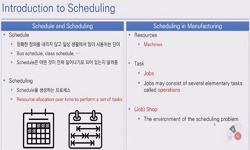With the increasing use of electric vehicles (EVs), there is a growing interest in the thermal management ofEVs. In this study, we first reduced the computational complexity of single particle model (SPM) for the battery cell byintroducing a 4th order...
http://chineseinput.net/에서 pinyin(병음)방식으로 중국어를 변환할 수 있습니다.
변환된 중국어를 복사하여 사용하시면 됩니다.
- 中文 을 입력하시려면 zhongwen을 입력하시고 space를누르시면됩니다.
- 北京 을 입력하시려면 beijing을 입력하시고 space를 누르시면 됩니다.



Sensitivity analysis for parameter classification of energy balance-integrated single particle model for battery cells
한글로보기https://www.riss.kr/link?id=A108662472
- 저자
- 발행기관
- 학술지명
- 권호사항
-
발행연도
2022
-
작성언어
English
- 주제어
-
등재정보
KCI등재,SCIE,SCOPUS
-
자료형태
학술저널
- 발행기관 URL
-
수록면
1396-1411(16쪽)
- DOI식별코드
- 제공처
- 소장기관
-
0
상세조회 -
0
다운로드
부가정보
다국어 초록 (Multilingual Abstract)
With the increasing use of electric vehicles (EVs), there is a growing interest in the thermal management ofEVs. In this study, we first reduced the computational complexity of single particle model (SPM) for the battery cell byintroducing a 4th order approximation for Li-ion concentration in the solid phase. In addition, by integrating it with anenergy balance, the constructed model can calculate the battery temperature along with the terminal voltage and stateof charge. To develop a model compatible with the experimental data requires parameter estimation. However, the estimationaccuracy for each parameter depends on its sensitivity. We investigated the influence of 16 parameters on themeasured data under general experimental conditions (constant C-rate discharge) through simulations and sensitivityanalysis. We classified the radius of the particle, total active surface areas, electrode maximum concentration, and a heattransfer coefficient as dominant parameters. When dominant parameters were estimated using the virtual experimentaldata, the percent error was smaller than 3.1%. For the parameters with minor influence, the estimation error waslarge even with the excellent agreement of the experimental data. We confirmed which parameter could be estimatedusing the C-rate experimental data accurately and which parameter should be estimated with additional experiments.
동일학술지(권/호) 다른 논문
-
- 한국화학공학회
- 정세민
- 2022
- KCI등재,SCIE,SCOPUS
-
Process modeling and design of reverse osmosis membrane system for seawater desalination
- 한국화학공학회
- 김미애
- 2022
- KCI등재,SCIE,SCOPUS
-
Pyrolysis characteristics and quantitative kinetic model of microalgae Tetralselmis sp.
- 한국화학공학회
- The Ky Vo
- 2022
- KCI등재,SCIE,SCOPUS
-
Global evaluation of economics of microalgae-based biofuel supply chain using GIS-based framework
- 한국화학공학회
- 강성환
- 2022
- KCI등재,SCIE,SCOPUS




 KCI
KCI






